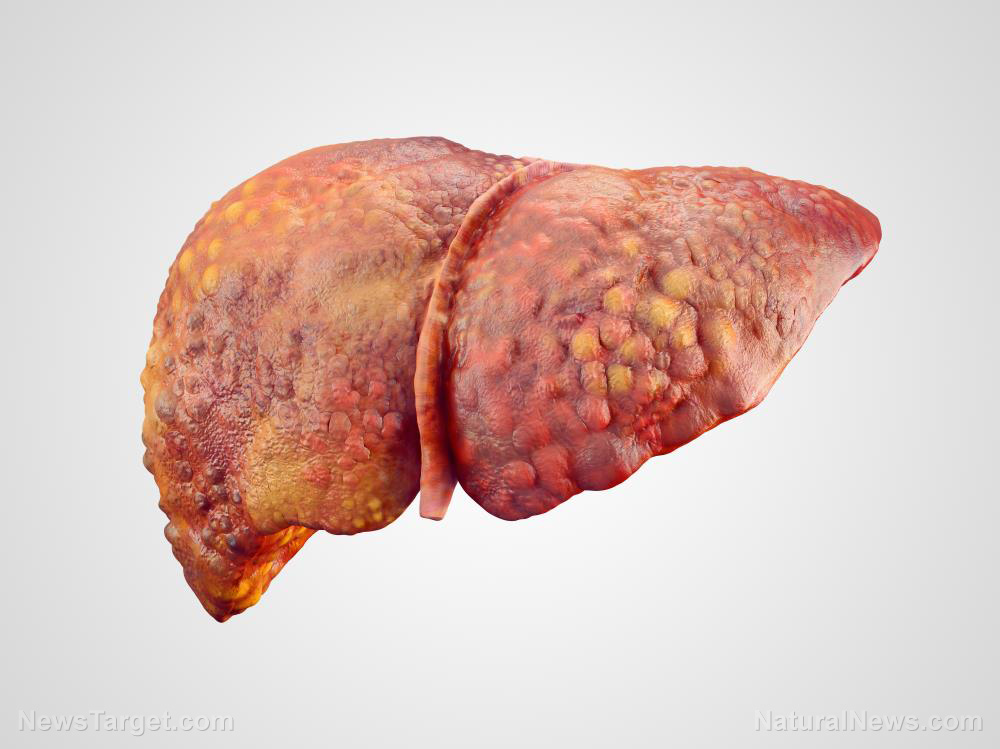Study concludes that the giant-leaved fig reduces oxidative stress in the liver
03/11/2019 / By Edsel Cook

The giant-leaved fig (Ficus lutea) is usually known as a pretty ornamental tree or a very useful source of food and wood products. Now, an Egyptian animal study indicated that the leaves of the tree could provide a natural way of protecting the liver from oxidative stress.
Also called the “Lagos rubbertree,” this species is a common tree in the warm subtropical coasts of Africa. Its beautiful appearance, numerous clusters of edible fruit, and useful bark ensure its place in natural ecology and human economy. This tree is also one of the fig species that is used in traditional African medicine. Its leaves are prescribed as a herbal remedy for diabetes and similar diseases.
In 2014, the University of Pretoria conducted a study on the anti-diabetic properties of 10 different Ficus species. The giant-leaved fig was the only tested species that displayed considerable effect on the metabolization of glucose. In particular, the F. lutea extract was shown to influence H-4-II-E liver cells. The results of these and other studies suggested that the giant-leaved fig could play an important role in regulating the functions of the liver. (Related: Sesame seeds may relieve liver damage caused by modern drugs.)
Can the large leaves of Ficus lutea protect the liver from oxidative stress?
Searching for plant-based compounds that could shield the liver from oxidative stress, researchers at the National Research Centre (NRC) in Egypt investigated the giant-leaved fig. They processed dried powdered fig leaves to produce an ethanol-based extract. The crude cold ethanol extract underwent a series of liquid fractionation processes. Eventually, an n-hexane fraction was produced.
Mother Nature's micronutrient secret: Organic Broccoli Sprout Capsules now available, delivering 280mg of high-density nutrition, including the extraordinary "sulforaphane" and "glucosinolate" nutrients found only in cruciferous healing foods. Every lot laboratory tested. See availability here.
Analysis of the fig leaf extract and its fraction was performed via saponification and gas chromatography-mass spectrometry. During the latter test, the researchers used column chromatography to separate the individual chemical compounds based on the color of the substance. The standard DPPH free radical test determined the in vitro antioxidant activity of the extracts. The amount of DPPH scavenged by each substance was recorded for comparison.
For the in vivo test, the NRC researchers created an animal model of liver disease. They induced liver disorders into rats via injections of carbon tetrachloride (CCI4). Afterward, they divided the CCI4-injured rats into several groups. Each group got a different extract or fraction as treatment. The treatments were evaluated based on their effects on oxidative stress markers and liver enzymes. An untreated group of healthy rats served as the control. At the end of the trial, the rats were sacrificed to provide liver and blood samples for histopathology and chemical analysis.
Giant-leaved fig contains phytochemicals that prevent liver damage
The chemical tests revealed that triterpenoid saponins and steroids comprised most of the plant compounds. The most common saponins were 20,22- Epoxyeupha-24-ene-3-one, alpha-amyrin acetate, lupenone (lupane skeleton), and methyl isomasticadienonate (8-tirucallane skeleton). For steroids, the most notable one was stigmasterol.
In the free radical test, the n-hexane fraction demonstrated the greatest antioxidant activity. It outperformed the crude cold ethanol extract when it came to scavenging DPPH. Finally, in the in vivo test, CCI4-injured rats displayed liver damage consistent with expectations. CCI4 is commonly used to replicate the effects of liver diseases like cirrhosis and hepatitis.
Furthermore, the treated animals displayed healthier livers than untreated rats. They showed fewer signs of oxidative stress and more normal levels of liver enzymes. Histopathology showed that the livers of treated animals showed less scarring from oxidative stress.
The NRC research team concluded that the giant-leaved fig showed considerable antioxidant and liver-protective properties. They believed that further studies would identify the specific active compound responsible for these proper.
Sources include:
Tagged Under: alternative medicine, antioxidants, giant-leaved fig, Hepatoprotective, herbal medicine, Herbs, Liver, liver damage, natural cures, natural health, natural medicine, oxidative stress, prevention, research




















